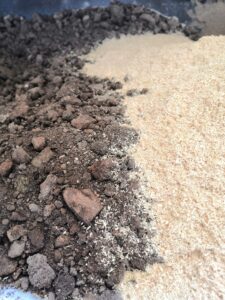Guidelines on community-led heating and cooling
Heating and cooling technologies
Biomass heating
The energy communities that have opted for biomass energy are usually located in mountainous areas, and opt for local wood chips, an energy source that requires little processing, and little transport, accompanied by a sustainable management of the forest, which makes it more environmentally attractive than wood pellets (many of which come from countries outside of the EU).
Despite the benefits of locally harvested biomass (given its short supply chains), there is an argument against it regarding local emissions from combusting biomass. This is even more salient for small boiler plants that are used intermittently (e.g. in summer for domestic hot water).
To overcome this, it is highly recommended to install additional exhaust gas treatment systems, such as electrostatic precipitators (ESPs) which remove small particles from the mix, and better protects the health of your customers. Given that an ESP applies energy only to the particulate matter, it is therefore much more efficient than wet scrubbers.
In any case, and whichever the solution that you may choose to overcome the particulate matter emissions, your medium to long-term objective should remain to produce 100% renewable energy.
Example
ESEK is located in the Greek region of Karditsa, a region rich in residual biomass due to their predominant agriculture and mountainous forests. When the community rejected the installation of a wind turbine by a private company, the citizens decided to get together with farmers and the municipality to create energy out of the residue of their mismanaged forests and agricultural land.
They get their primary biomass through agreements with farmers, municipal tree-pruning initiatives, and forest cooperatives for residual agricultural and forest biomass. This supply is achieved through various Memorandums of Understanding, and is employing farmers and tree-pruners to gather it, which fulfils ESEK’s goal of avoiding rural exodus through the creation of renewable jobs.
In addition, ESEK innovated to create a new type of pellet made out of recycled coffee-grounds, which at the same time decreases the amount of biomass needed. This was done in collaboration with the local kindegarten, in an educational programme on circularity, that provided over 1 tonne of pellets to the kindergarten, as well as the area’s energy poor households.
It took them 2 years to have the first production of pellets ready for distribution

Copyright ESEK
Does your energy community use biomass, and you would like to see it in these Digital Guidelines? Send an email to info@energycommunityplatform.eu.
